-
CATEGORY ::
- All Seeds /
- All Flower Seeds /
- All Petunia Seeds
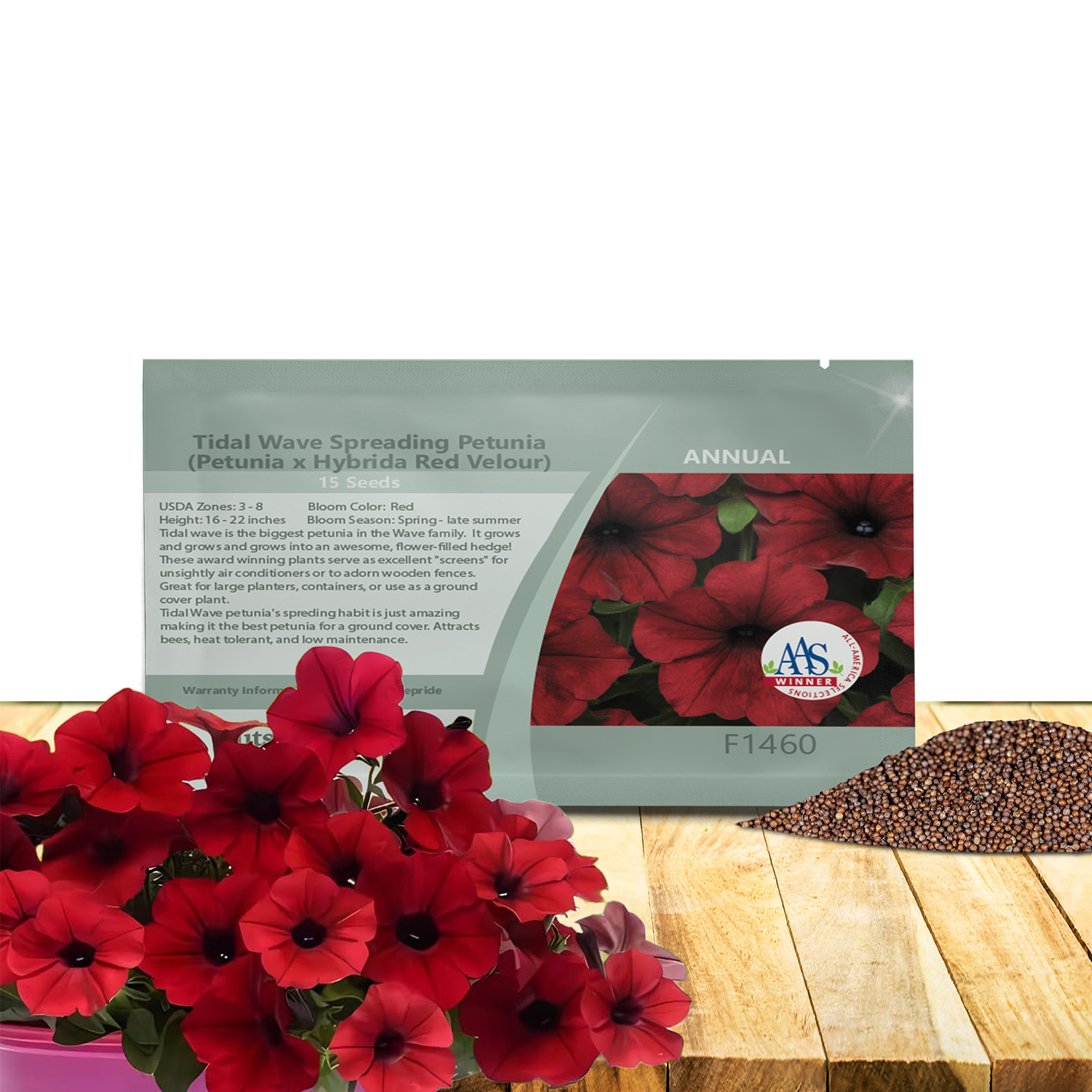

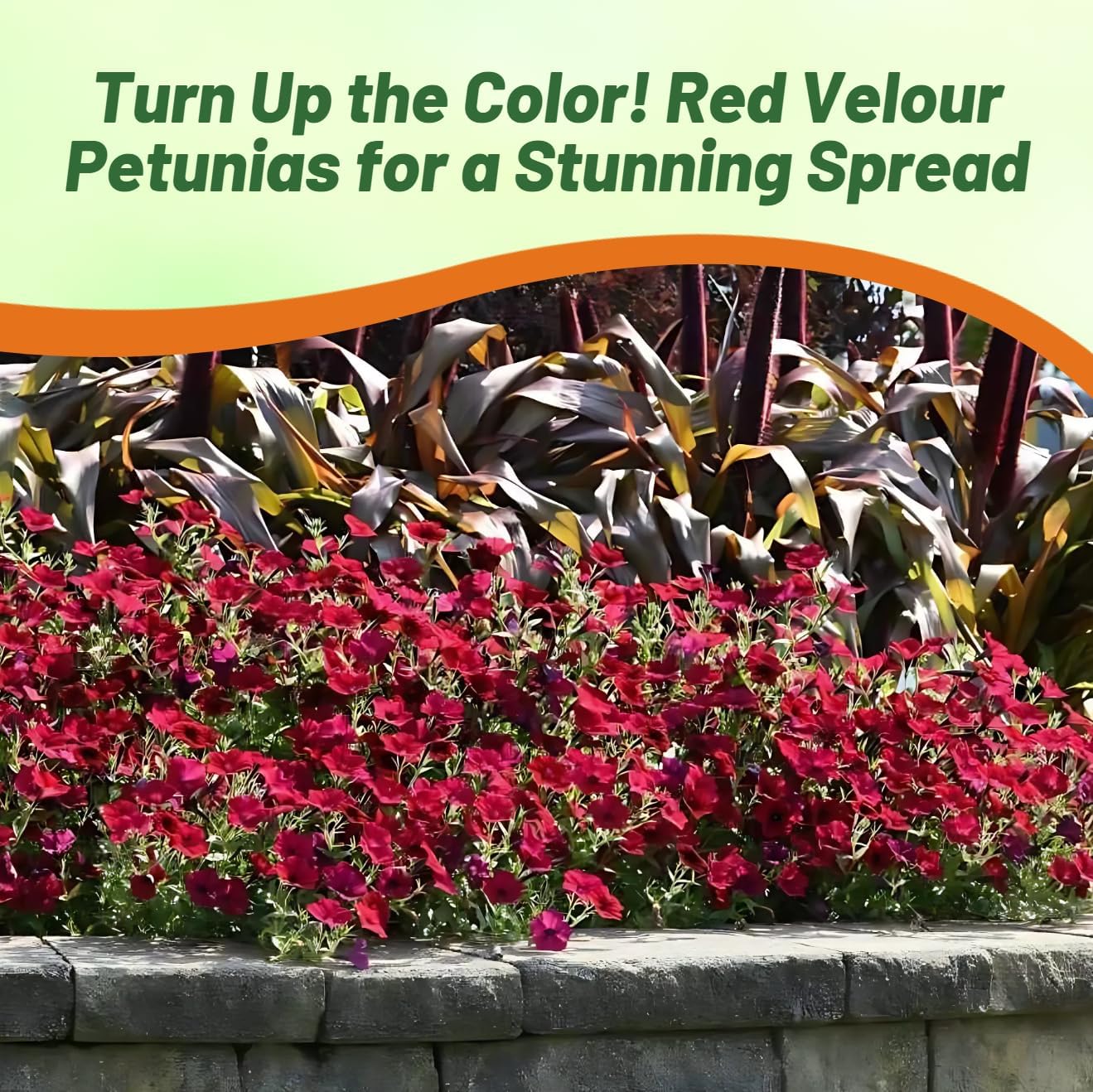
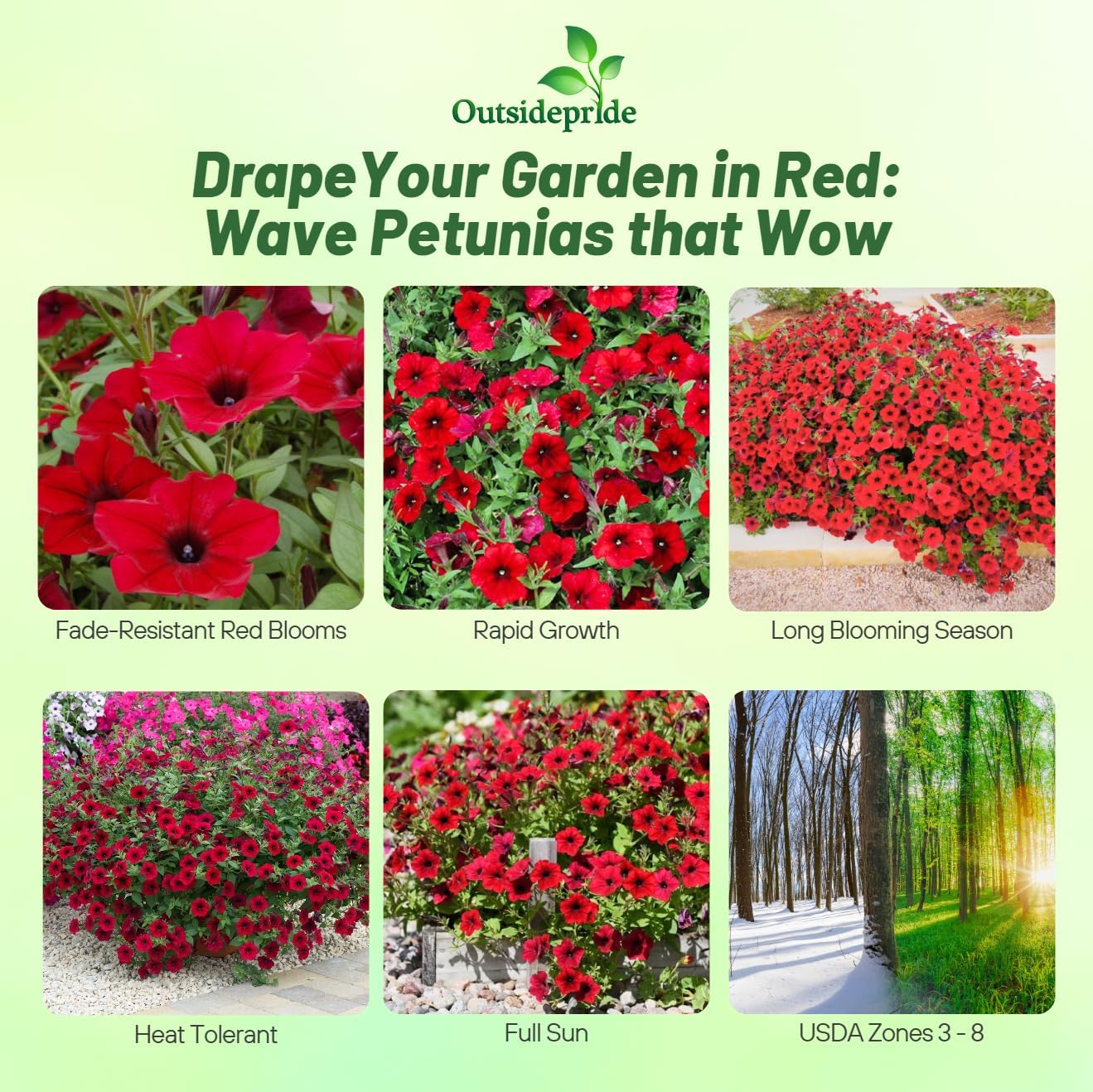
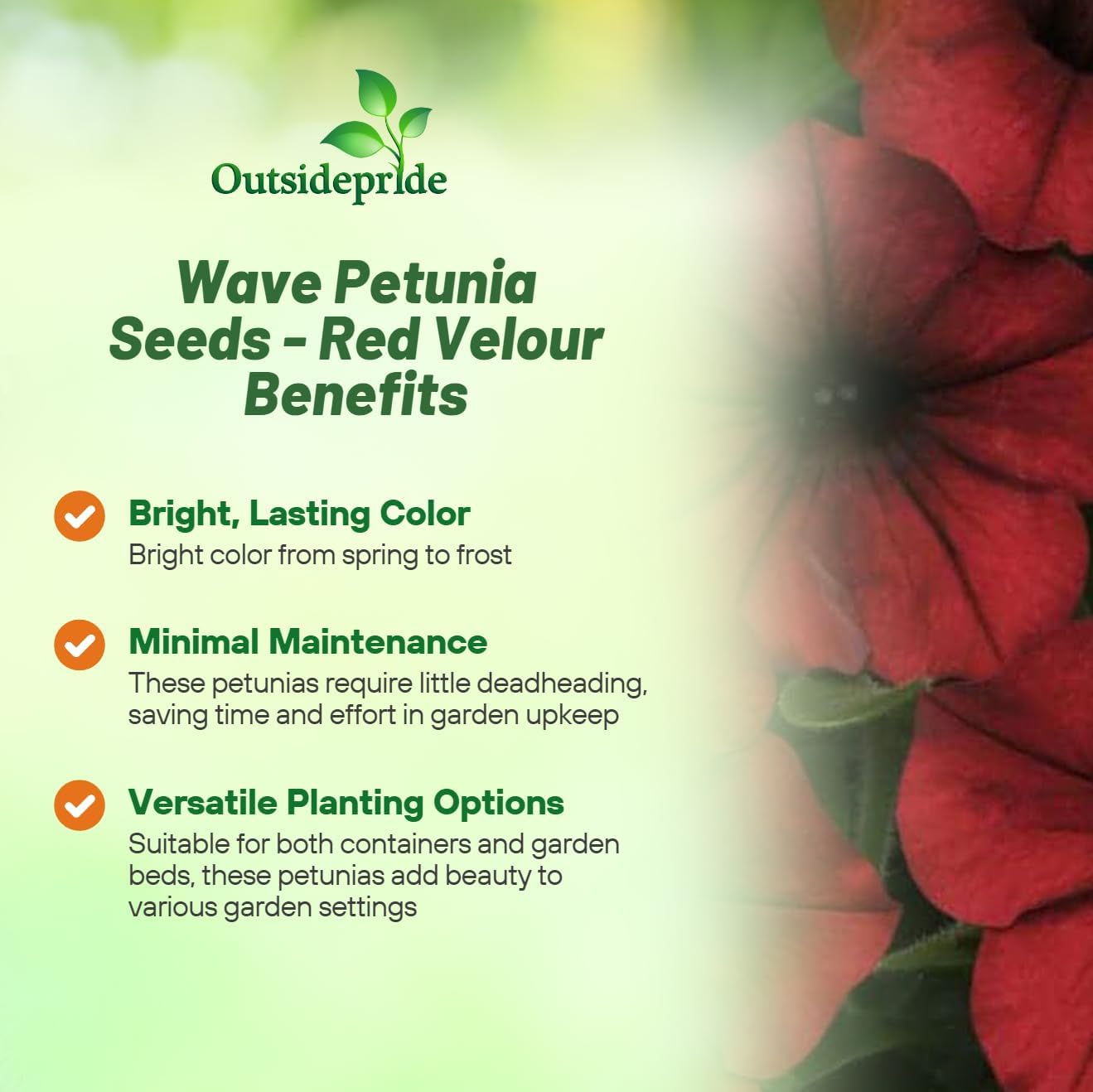
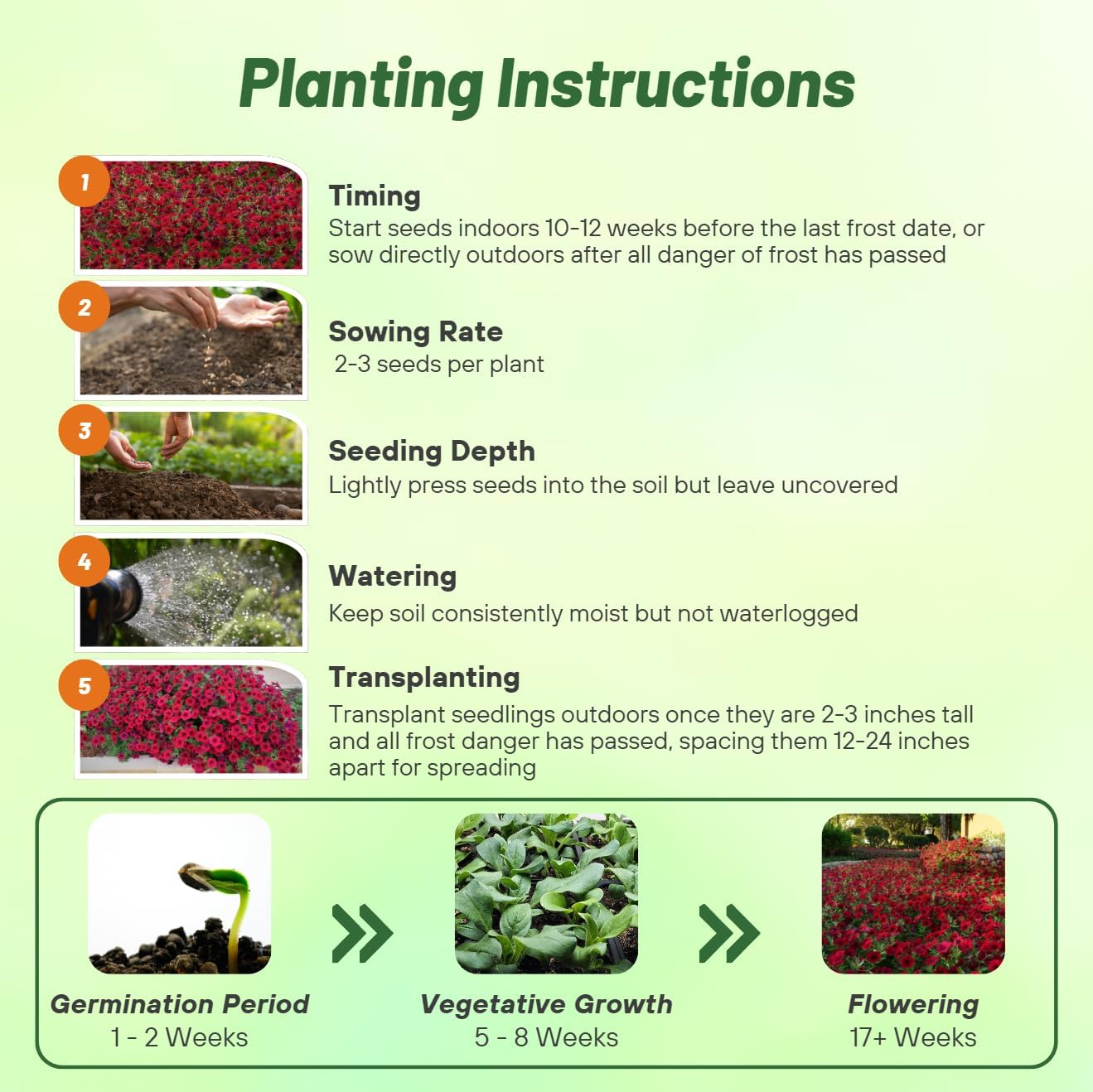
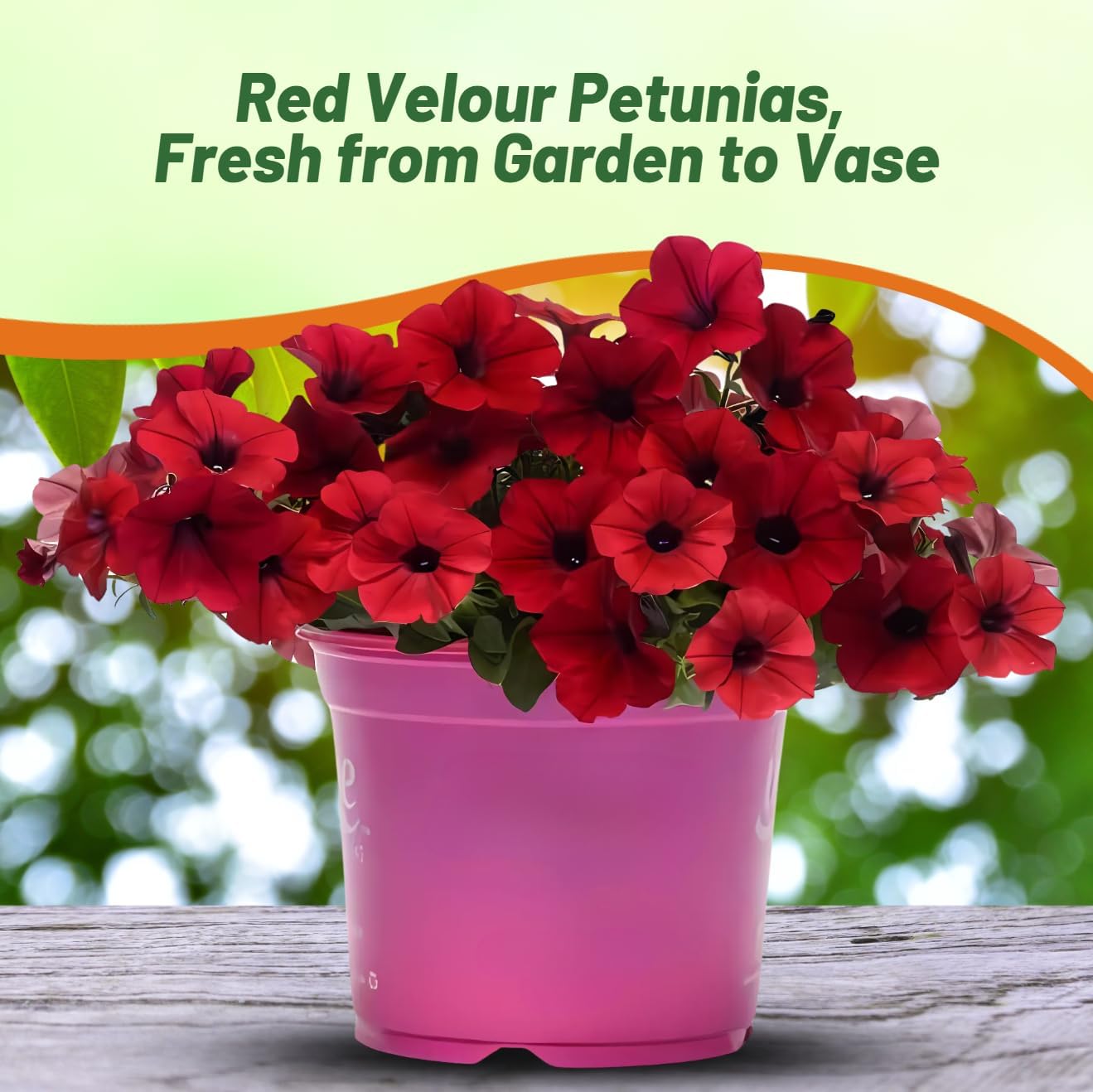
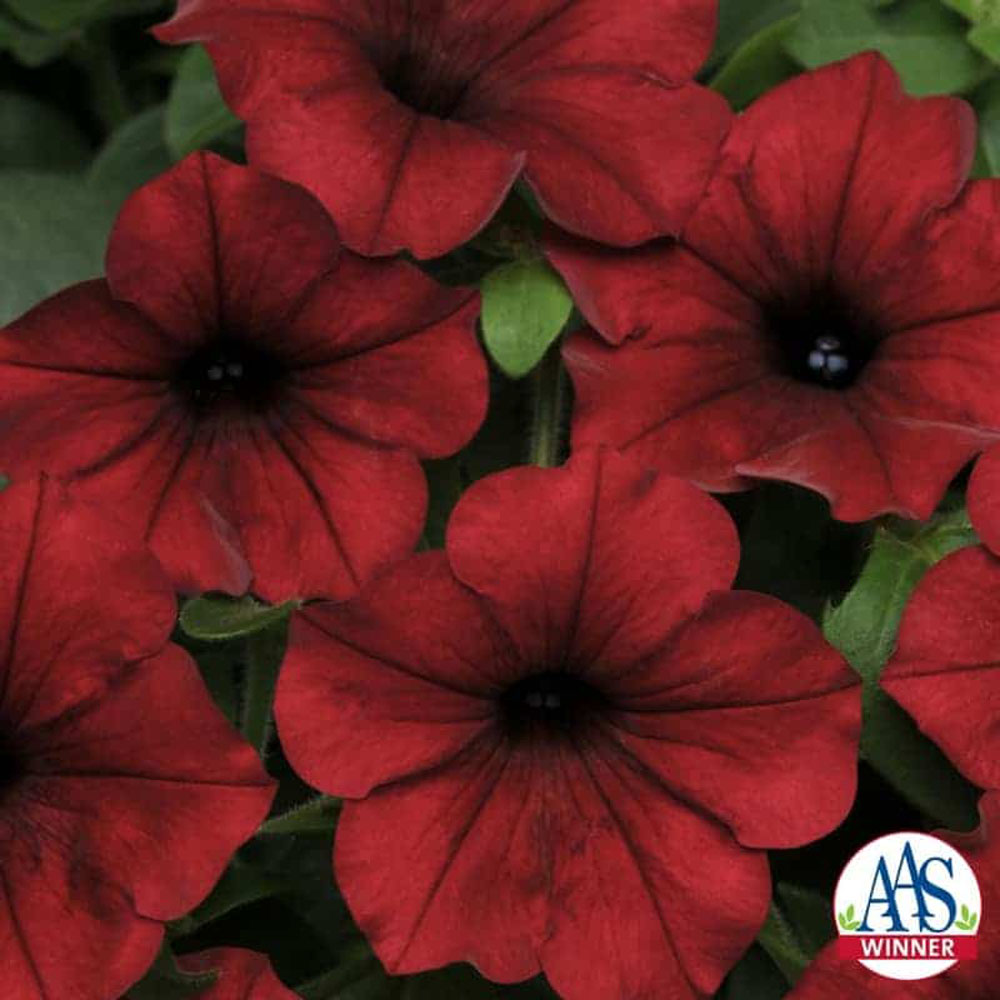

Wave Petunia Seeds - Red Velour
About...
Tidal Wave Spreading Petunia (Petunia x Hybrida Red Velour) - This fast growing, spreading petunia reaches heights of 16 - 22 inches; however, it spreads 30 - 60 inches providing mountains of color in big gardens or containers!MORE PETUNIA OPTIONS
Planting Directions
TEMPERATURE
72 - 76F
AVERAGE GERM TIME
7 - 14 days
LIGHT REQUIRED
Yes
DEPTH
Do not cover the seed but press into the soil
SOWING RATE
2 - 3 seeds per plant
MOISTURE
Keep soil moist for best germination
PLANT SPACING
12 - 24 inches

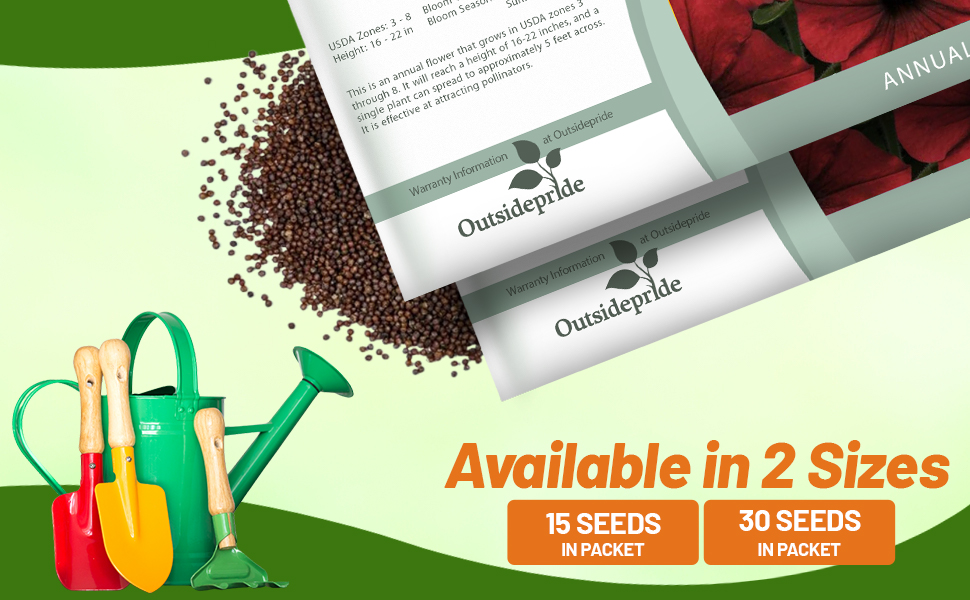
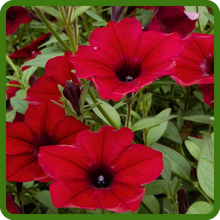
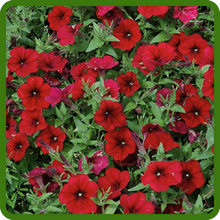
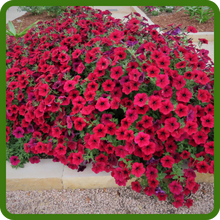
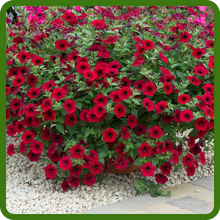
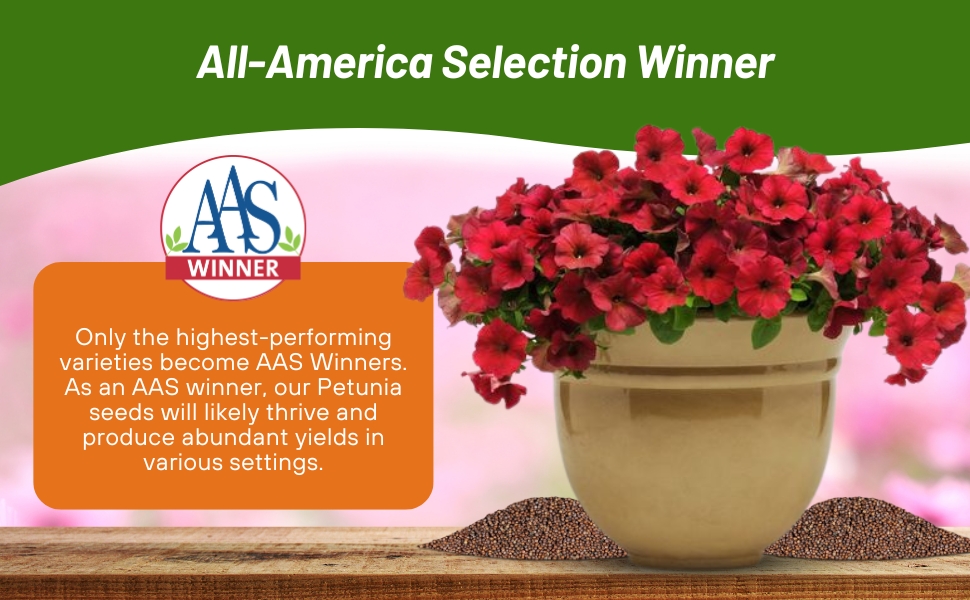
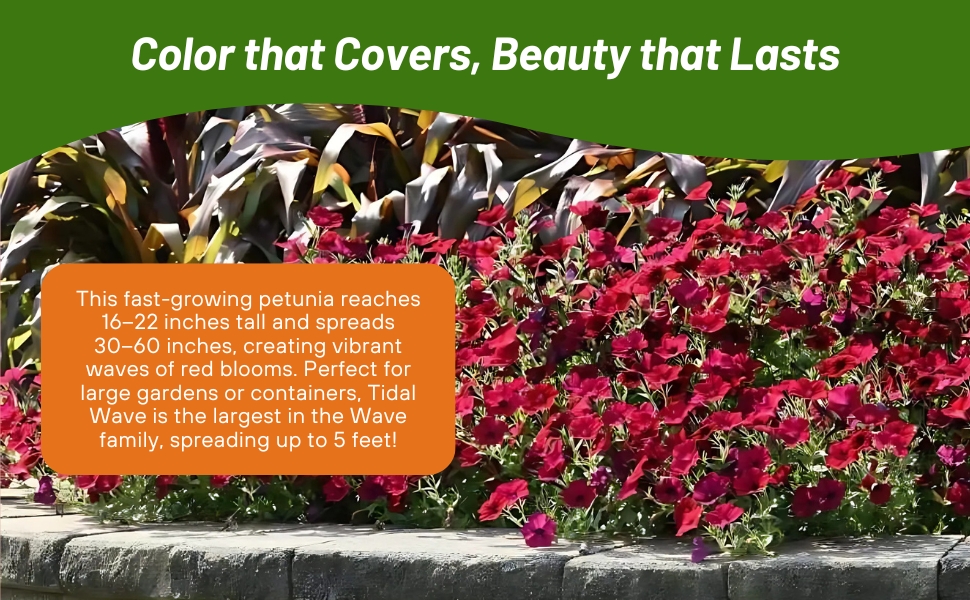
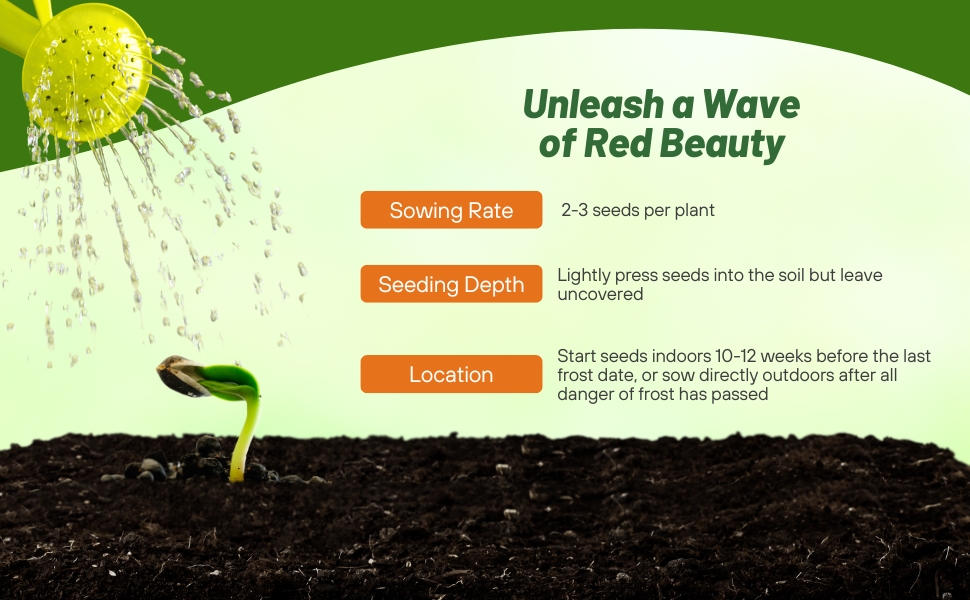
Tidal Wave Spreading Petunia (Petunia x Hybrida Red Velour) - This fast growing, spreading petunia reaches heights of 16 - 22 inches; however, it spreads 30 - 60 inches providing mountains of color in big gardens or containers! Yes, that right, it can spread up to 5 feet with wave of red blooms! Tidal wave is the biggest petunia in the Wave family. It grows and grows and grows into an awesome, flower-filled hedge! These award winning petunia plants serve as excellent "screens" for unsightly air conditioners or to adorn wooden fences. Also great for large planters, containers, or use as a ground cover plant.
Red Velour Tidal Wave petunia's spreding habit is just amazing making it the best petunia for a ground cover. Attracts bees, heat tolerant, and low maintenance.
2015 AAS Flower Winner. Fabulous and stunning color on a Wave petunia! The first Tidal Wave to win an AAS award was Silver in 2002. Now there is Velour Red with gorgeous deep red velvety blooms that don’t fade even in the heat of summer. Large flowers literally cover the vigorously spreading plants that rarely need deadheading because new blooms continuously pop up and cover the old, spent blooms. A perfect solution for the time-crunched gardener or anyone looking for petunias that are carefree. Tidal Wave petunias are the tallest of the Wave family and bloom over and over all season long and recover quickly, even after hard rains. Tidal Wave is an excellent landscape performer, covering a large area quickly and beautifully. Tidal Wave is also the recipient of the Fleuroselect Gold Medal award for performance in European trials.
Common Questions
Do I need to deadhead my flowers?
Yes, you will need to deadhead your flowers to encourage more blooms.
Do petunia’s attract any pollinators?
Yes, butterflies and hummingbirds both enjoy these flowers.
What are some good ways to use in my landscape?
Beds, borders, edging, ground cover, hanging baskets or containers are all wonderful ways to use petunia’s around your garden or landscape.
My plants leaves are turning yellow, why?
Yellow leaves are a sign of low nitrogen or iron, not enough water, not enough sunlight or poor drainage. Review your growing conditions to try and determine the cause.
My flowers and leaves are looking wilted, what do I do?
Check soil moisture, it is most likely that your plant needs more water.
What are some common companion plants?
Geraniums, osteopermum, verbena and salvia all are beautiful companion plants.
Planting Directions
TEMPERATURE
72 - 76F
AVERAGE GERM TIME
7 - 14 days
LIGHT REQUIRED
Yes
DEPTH
Do not cover the seed but press into the soil
SOWING RATE
2 - 3 seeds per plant
MOISTURE
Keep soil wet for best germination
PLANT SPACING
12 inches
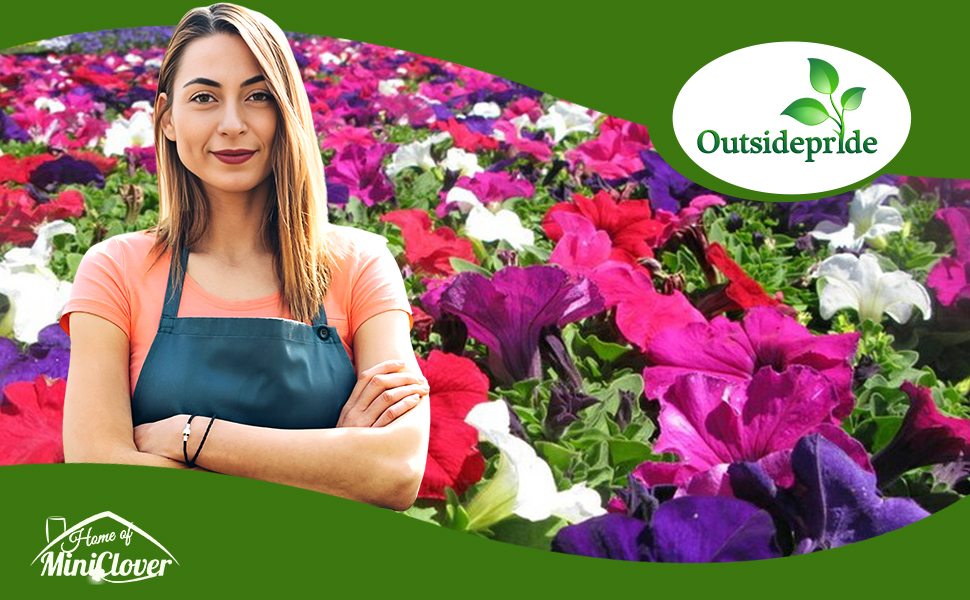
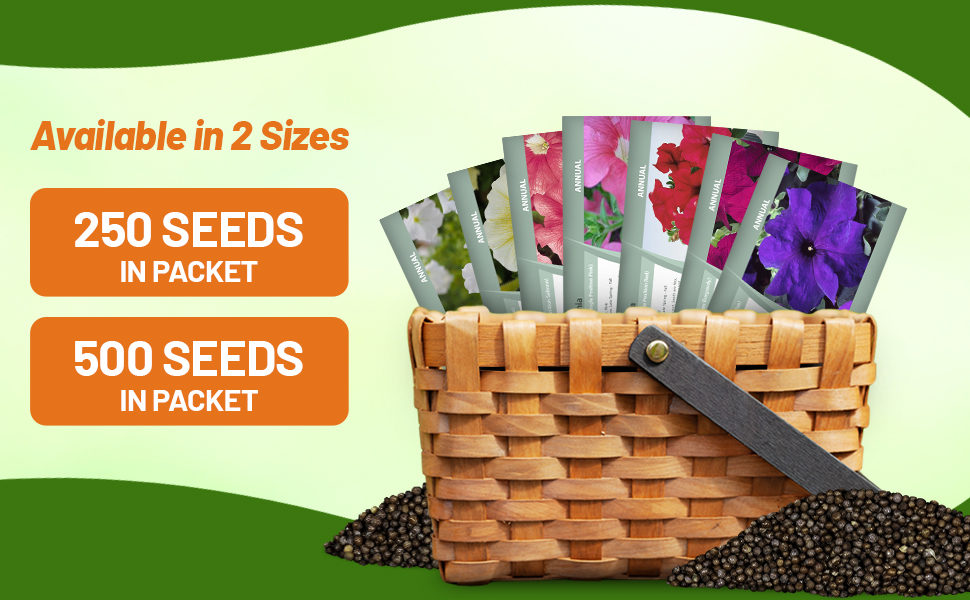
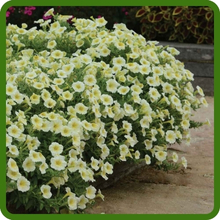
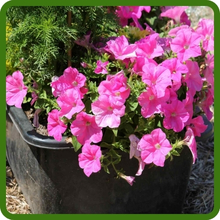
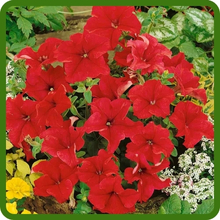
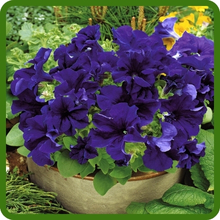
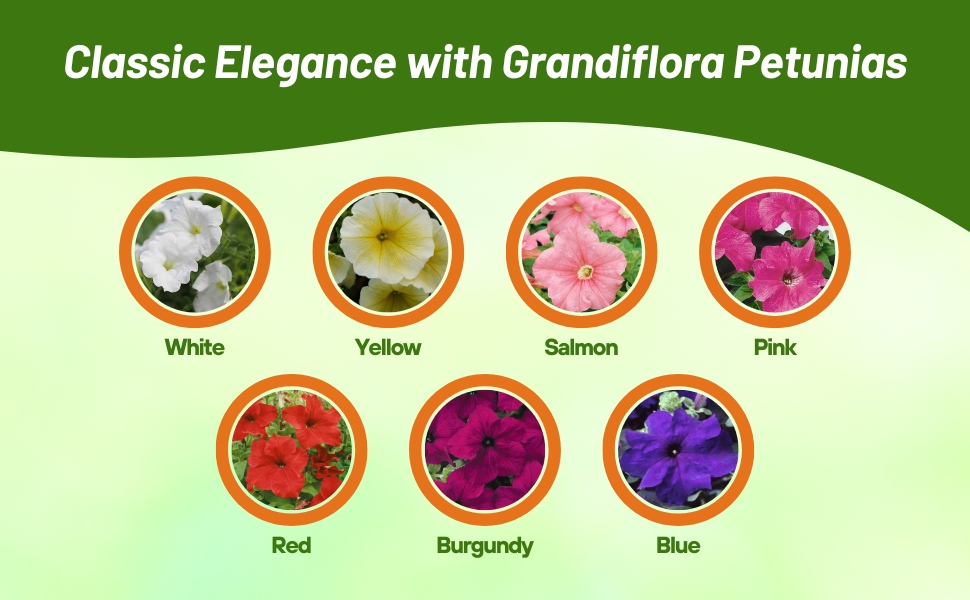
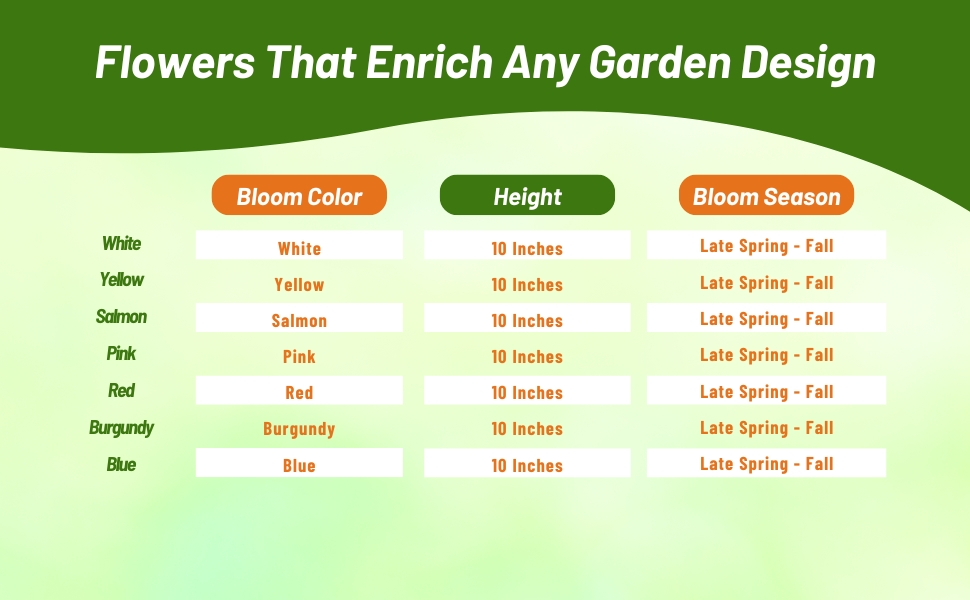
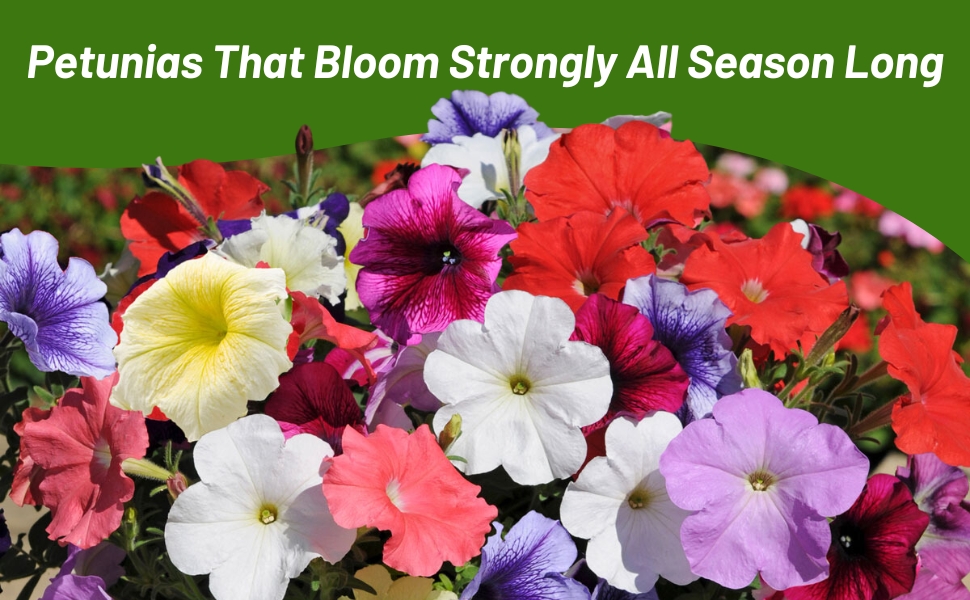
Petunia (Petunia Grandiflora F1 Single Position Blue) - No flowers are more well-known and loved than Petunias. These flowers have many uses including, flower beds, baskets and containers of all kinds! They establish easily from Petunia seeds, and they perform from late spring until frost. This blue flower has 4 inch trumpet-shaped blooms that are an intense violet-blue. The flowers love sun, and in the hottest climates, they do well with some afternoon shade. They perform best in fertile, well-drained soil kept evenly moist. Petunia flower care includes: deadheading faded flowers for best display and to keep it full of color all season long and fertilizing regularly with a balanced liquid fertilizer.
How to Grow Petunias from Seed: Sow Petunia Grandiflora seeds indoors 10 - 12 weeks before planting out. The flower seeds are extremely tiny, so press them gently onto the soil surface without covering, and keep the soil wet for the best germination. Placing the trays or containers on top of the refrigerator is beneficial as the heat from the appliance keeps the flower seeds consistently warm. Five or six weeks after sowing the seeds, transplant the seedlings into 3 inch pots, and grow on in cooler temperatures with plenty of light. Harden young plants for 10 - 14 days before planting outdoors after last frost date. When planting outdoors, pinch the young seedlings back to encourage branching.
Common Questions
Do I need to deadhead my flowers?
Yes, you will need to deadhead your flowers to encourage more blooms.
Do petunia’s attract any pollinators?
Yes, butterflies and hummingbirds both enjoy these flowers.
What are some good ways to use in my landscape?
Beds, borders, edging, ground cover, hanging baskets or containers are all wonderful ways to use petunia’s around your garden or landscape.
My plants leaves are turning yellow, why?
Yellow leaves are a sign of low nitrogen or iron, not enough water, not enough sunlight or poor drainage. Review your growing conditions to try and determine the cause.
My flowers and leaves are looking wilted, what do I do?
Check soil moisture, it is most likely that your plant needs more water.
What are some common companion plants?
Geraniums, osteopermum, verbena and salvia all are beautiful companion plants.
Planting Directions
TEMPERATURE
72 - 76F
AVERAGE GERM TIME
7 - 14 days
LIGHT REQUIRED
Yes
DEPTH
Do not cover the seed but press into the soil
SOWING RATE
2 - 3 seeds per plant
MOISTURE
Keep soil moist for best germination
PLANT SPACING
10 - 15 inches

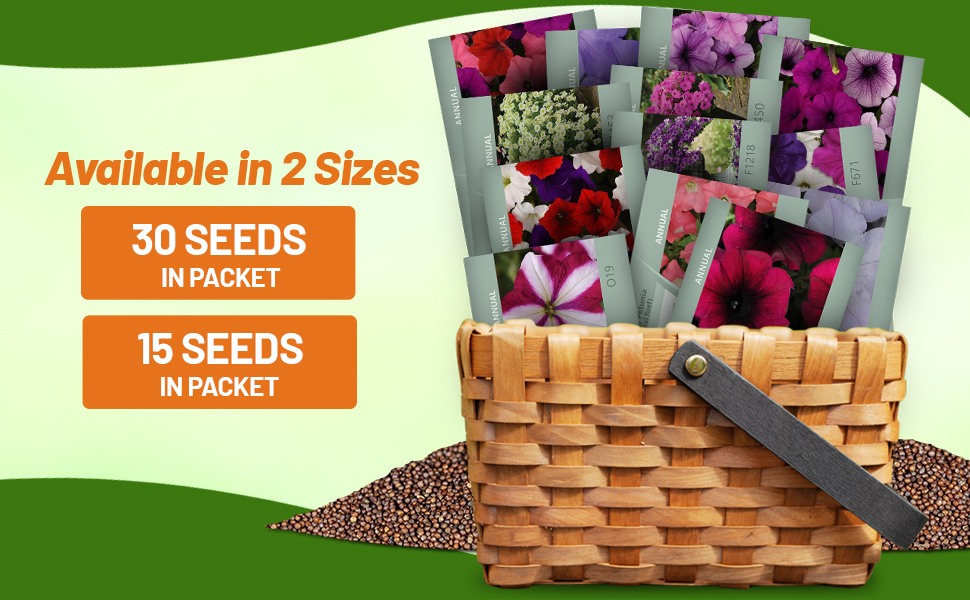
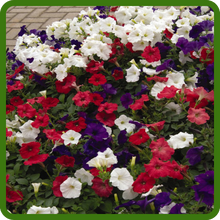
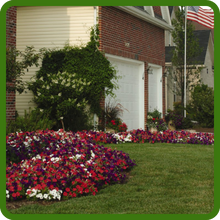
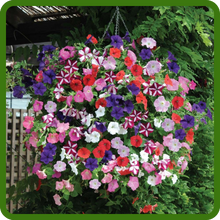
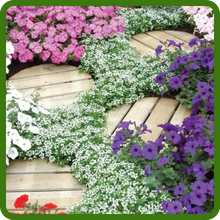
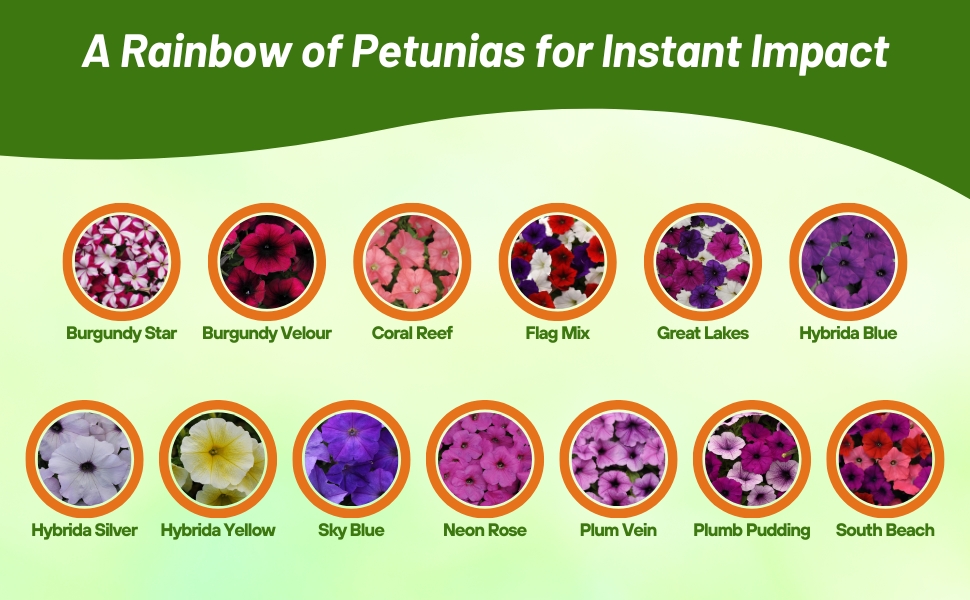
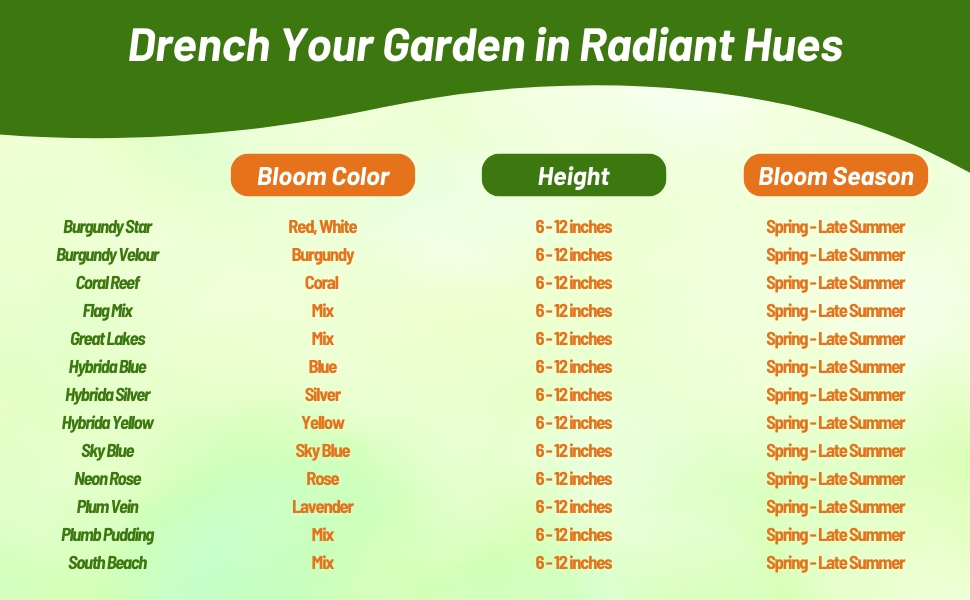
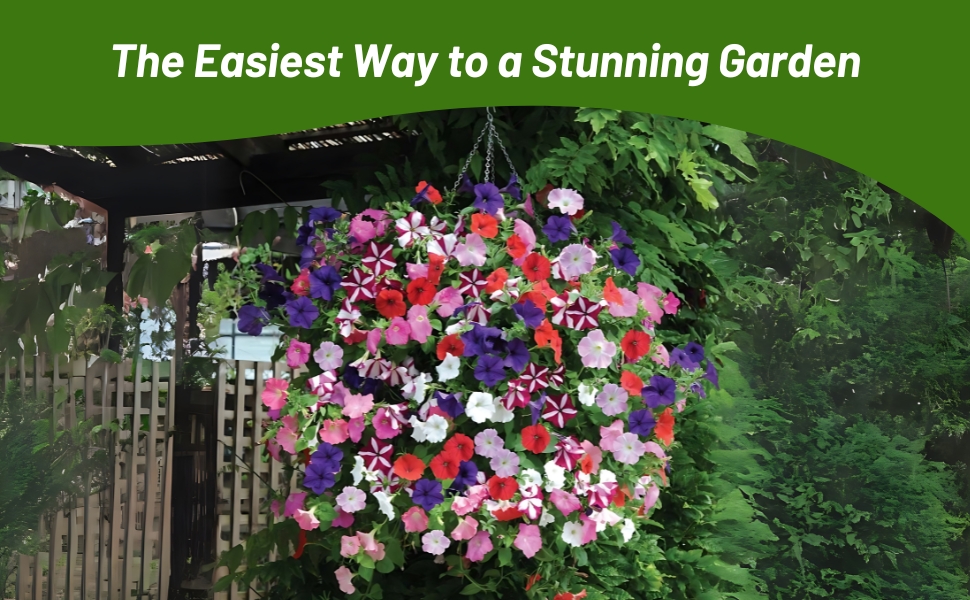
Easy Wave Spreading Petunia (Petunia x Hybrida Yellow) - This low growing, spreading petunia only reaches heights of 6 - 12 inches; however, it spreads 30 - 39 inches! Its beautiful 2 inch yellow blooms will flourish from Spring to late Summer. These fast-growing plants bloom freely all season in landscapes and containers without cutting back. Wave petunia plants tolerate both heat and cooler conditions very well. Perfect for solo and mixed planters and baskets, gardens and landscapes. Easy Wave is more mounded with a more controlled spread than Wave petunias.
Easy Wave petunia's spreding habit is just amazing, covering ground at the rate of several inches every single day when the weather is warm! Easy Wave doesn't reach quite as far as the older Waves, but it stands up "taller" offering a more manageable and attractive shape for hanging baskets, windowboxes, and flowerpots of all kinds.
Common Questions
Do I need to deadhead my flowers?
Yes, you will need to deadhead your flowers to encourage more blooms.
Do petunia’s attract any pollinators?
Yes, butterflies and hummingbirds both enjoy these flowers.
What are some good ways to use in my landscape?
Beds, borders, edging, ground cover, hanging baskets or containers are all wonderful ways to use petunia’s around your garden or landscape.
My plants leaves are turning yellow, why?
Yellow leaves are a sign of low nitrogen or iron, not enough water, not enough sunlight or poor drainage. Review your growing conditions to try and determine the cause.
My flowers and leaves are looking wilted, what do I do?
Check soil moisture, it is most likely that your plant needs more water.
What are some common companion plants?
Geraniums, osteopermum, verbena and salvia all are beautiful companion plants.
Planting Directions
TEMPERATURE
72 - 76F
AVERAGE GERM TIME
7 - 14 days
LIGHT REQUIRED
Yes
DEPTH
Do not cover the seed but press into the soil
SOWING RATE
2 - 3 seeds per plant
MOISTURE
Keep soil moist for best germination
PLANT SPACING
10 - 15 inches

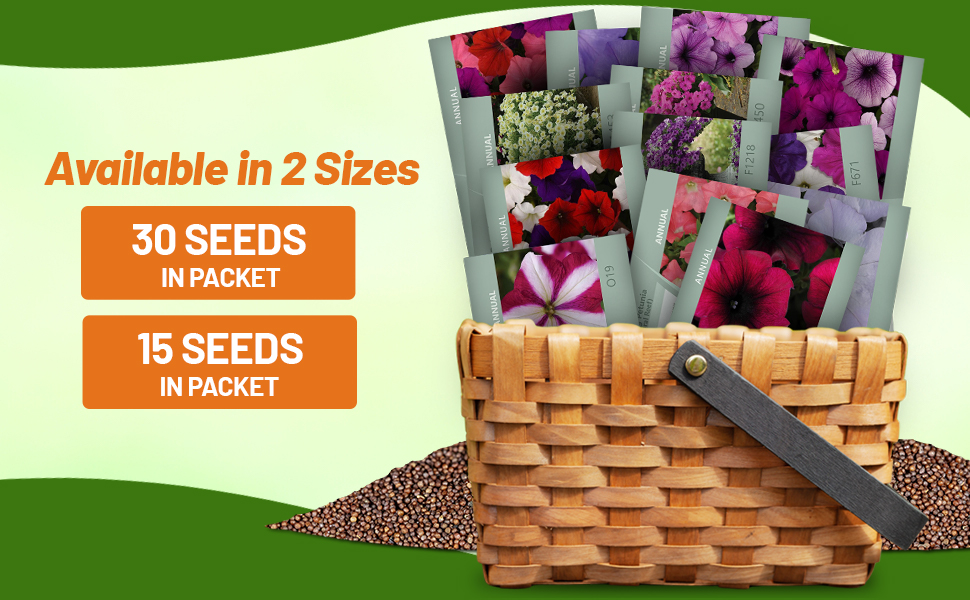
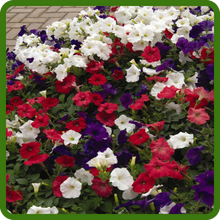
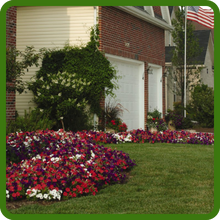
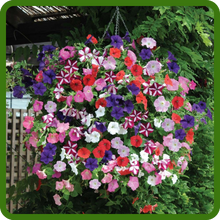
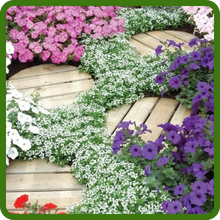
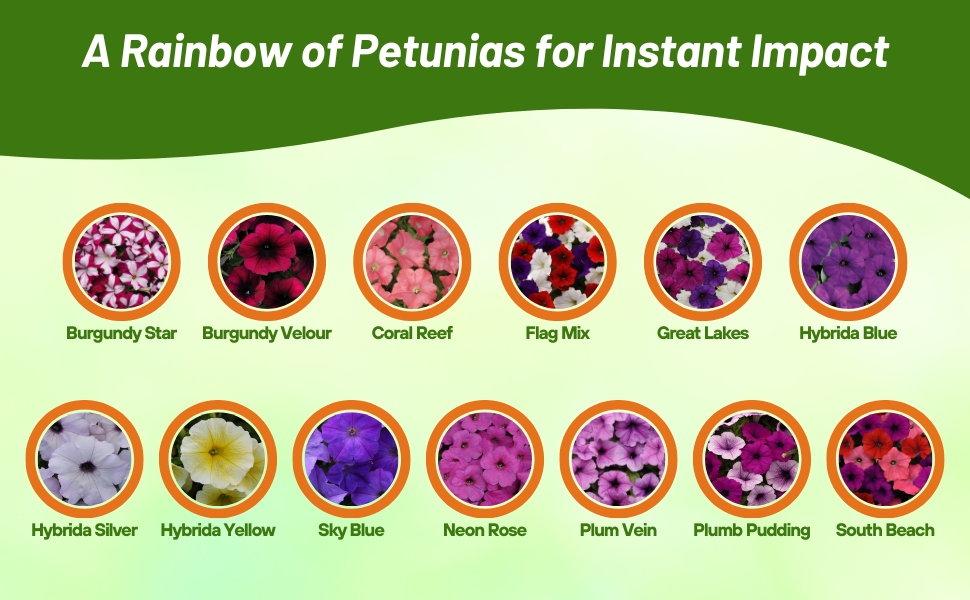
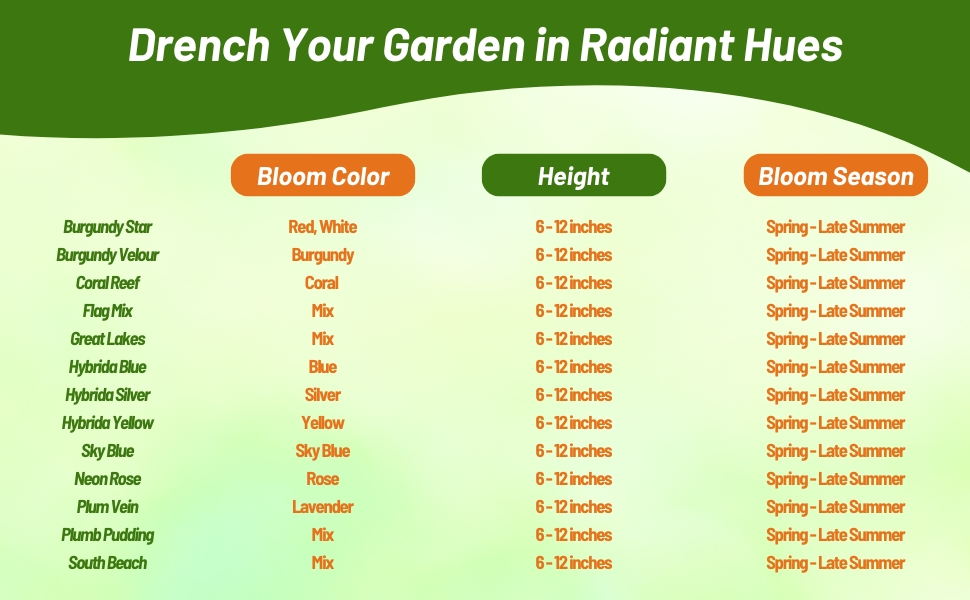
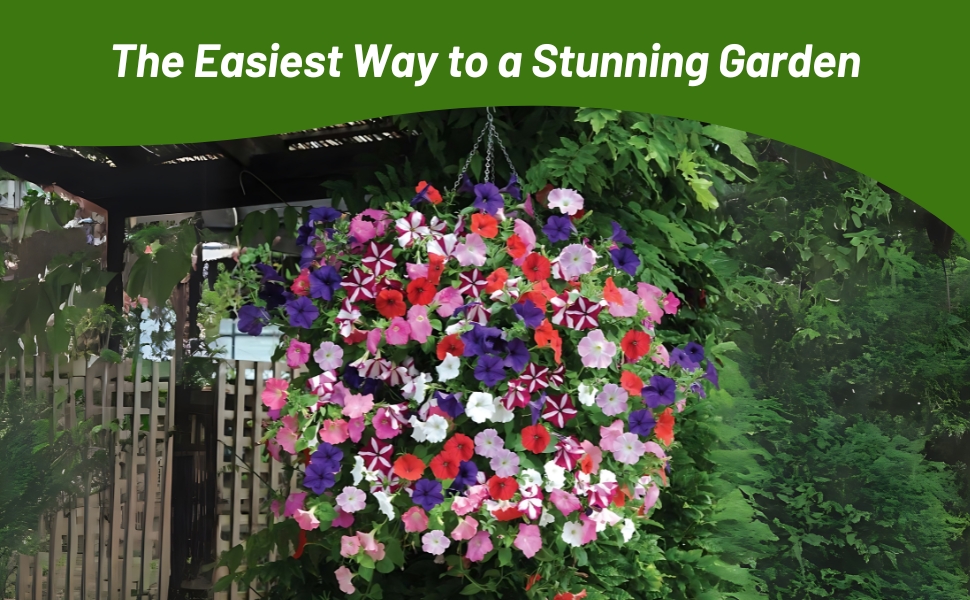
Easy Wave Spreading Petunia (Petunia x Hybrida Plumb Pudding Mix) - This low growing, spreading petunia only reaches heights of 6 - 12 inches; however, it spreads 30 - 39 inches! Its beautiful 2 inch blooms of purple/lavender shades will flourish from Spring to late Summer. These fast-growing plants bloom freely all season in landscapes and containers without cutting back. Wave petunia plants tolerate both heat and cooler conditions very well. Perfect for solo and mixed planters and baskets, gardens and landscapes. Easy Wave is more mounded with a more controlled spread than Wave petunias.
Easy Wave petunia's spreding habit is just amazing, covering ground at the rate of several inches every single day when the weather is warm! Easy Wave doesn't reach quite as far as the older Waves, but it stands up "taller" offering a more manageable and attractive shape for hanging baskets, windowboxes, and flowerpots of all kinds.
Common Questions
Do I need to deadhead my flowers?
Yes, you will need to deadhead your flowers to encourage more blooms.
Do petunia’s attract any pollinators?
Yes, butterflies and hummingbirds both enjoy these flowers.
What are some good ways to use in my landscape?
Beds, borders, edging, ground cover, hanging baskets or containers are all wonderful ways to use petunia’s around your garden or landscape.
My plants leaves are turning yellow, why?
Yellow leaves are a sign of low nitrogen or iron, not enough water, not enough sunlight or poor drainage. Review your growing conditions to try and determine the cause.
My flowers and leaves are looking wilted, what do I do?
Check soil moisture, it is most likely that your plant needs more water.
What are some common companion plants?
Geraniums, osteopermum, verbena and salvia all are beautiful companion plants.
Planting Directions
TEMPERATURE
72 - 76F
AVERAGE GERM TIME
7 - 14 days
LIGHT REQUIRED
Yes
DEPTH
Do not cover the seed but press into the soil
SOWING RATE
2 - 3 seeds per plant
MOISTURE
Keep soil moist for best germination
PLANT SPACING
10 - 15 inches

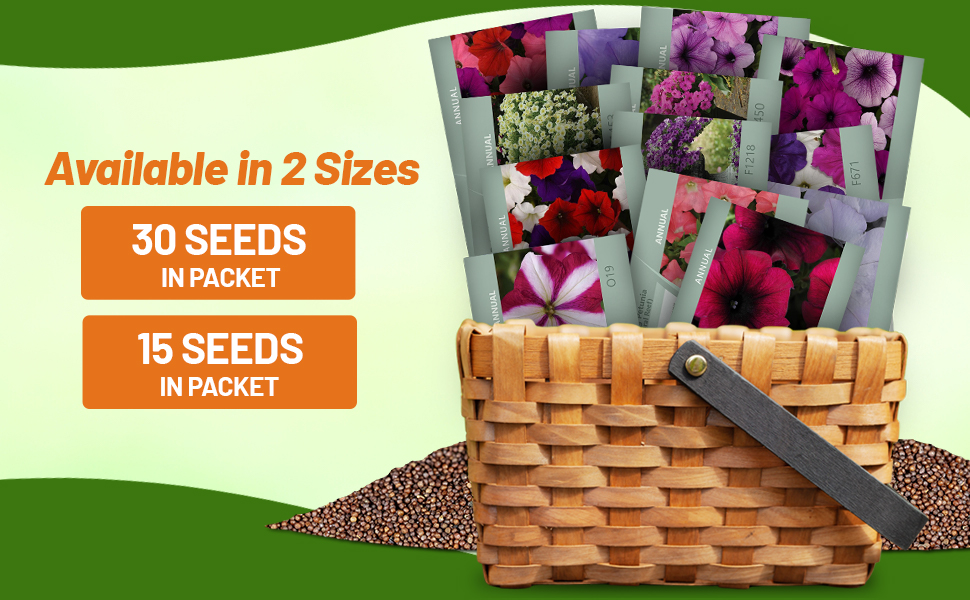
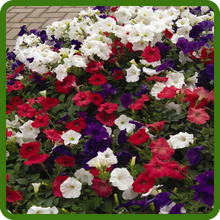
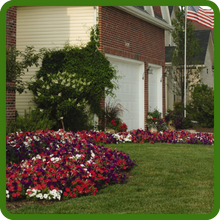
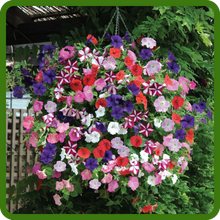
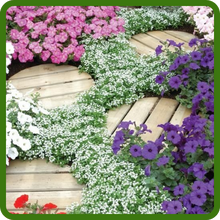
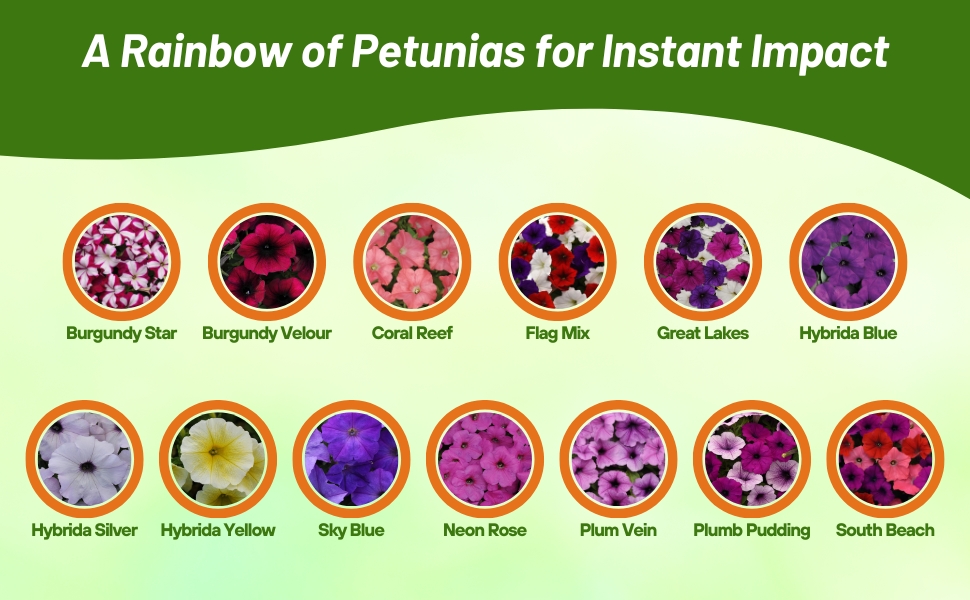
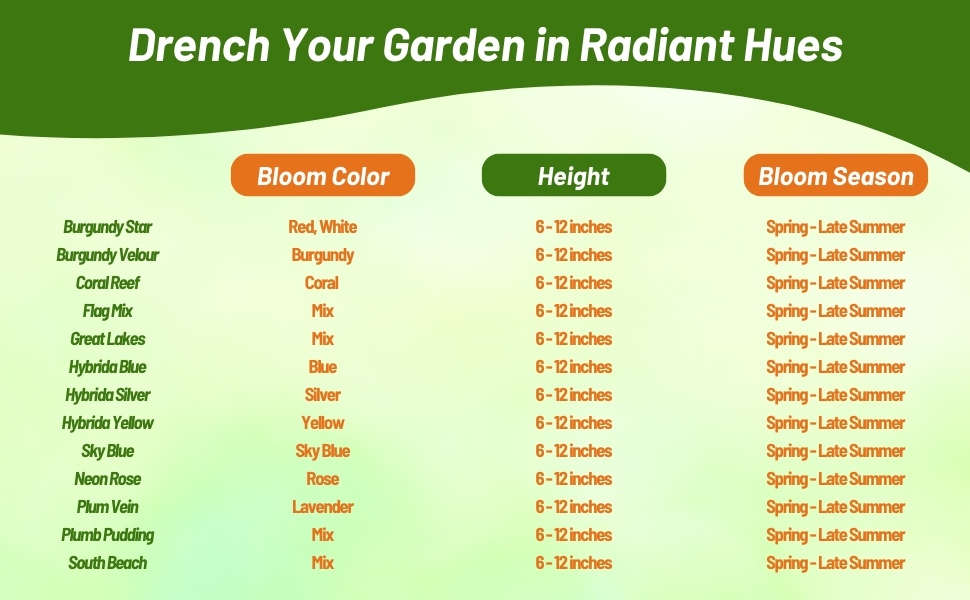
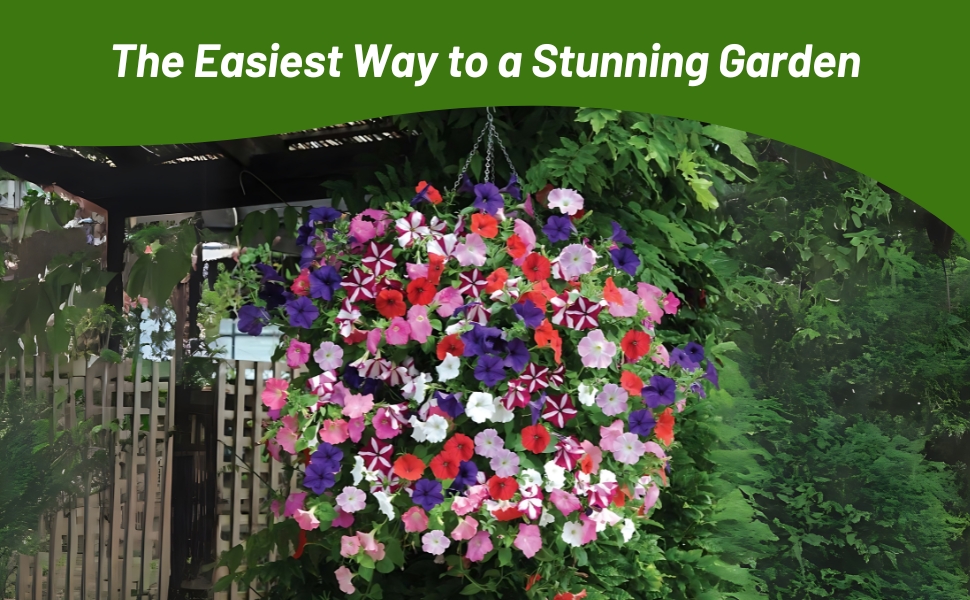
Easy Wave Spreading Petunia (Petunia x Hybrida South Beach Mix) - This low growing, spreading petunia only reaches heights of 6 - 12 inches; however, it spreads 30 - 39 inches! Its beautiful 2 inch blooms of red, purple, and pink shades will flourish from Spring to late Summer. These fast-growing plants bloom freely all season in landscapes and containers without cutting back. Wave petunia plants tolerate both heat and cooler conditions very well. Perfect for solo and mixed planters and baskets, gardens and landscapes. Easy Wave is more mounded with a more controlled spread than Wave petunias.
Easy Wave petunia's spreding habit is just amazing, covering ground at the rate of several inches every single day when the weather is warm! Easy Wave doesn't reach quite as far as the older Waves, but it stands up "taller" offering a more manageable and attractive shape for hanging baskets, windowboxes, and flowerpots of all kinds.
Common Questions
Do I need to deadhead my flowers?
Yes, you will need to deadhead your flowers to encourage more blooms.
Do petunia’s attract any pollinators?
Yes, butterflies and hummingbirds both enjoy these flowers.
What are some good ways to use in my landscape?
Beds, borders, edging, ground cover, hanging baskets or containers are all wonderful ways to use petunia’s around your garden or landscape.
My plants leaves are turning yellow, why?
Yellow leaves are a sign of low nitrogen or iron, not enough water, not enough sunlight or poor drainage. Review your growing conditions to try and determine the cause.
My flowers and leaves are looking wilted, what do I do?
Check soil moisture, it is most likely that your plant needs more water.
What are some common companion plants?
Geraniums, osteopermum, verbena and salvia all are beautiful companion plants.
Planting Directions
TEMPERATURE
72 - 76F
AVERAGE GERM TIME
7 - 14 days
LIGHT REQUIRED
Yes
DEPTH
Do not cover the seed but press into the soil
SOWING RATE
2 - 3 seeds per plant
MOISTURE
Keep soil moist for best germination
PLANT SPACING
10 - 15 inches

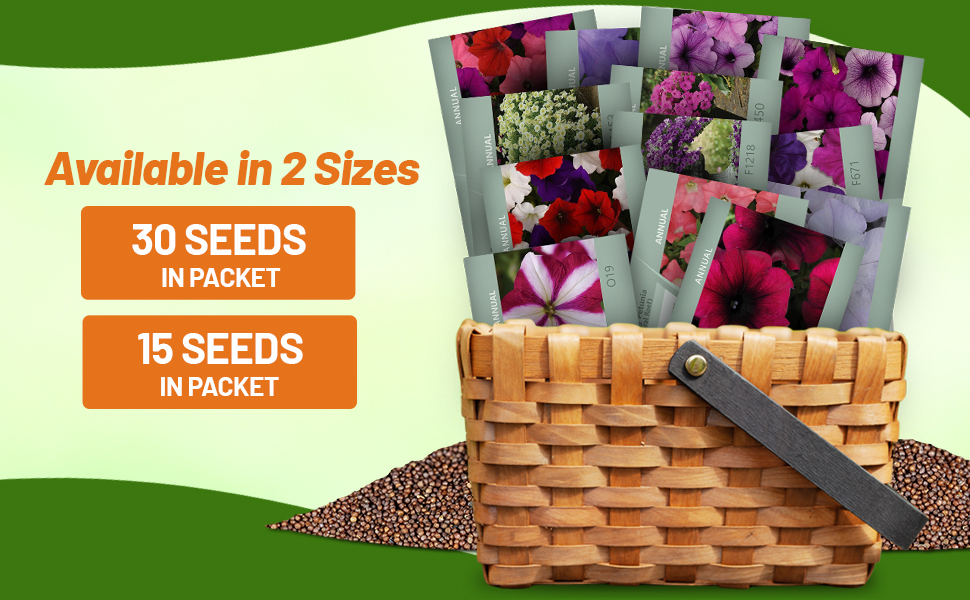
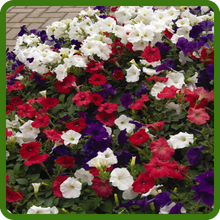
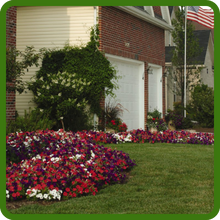
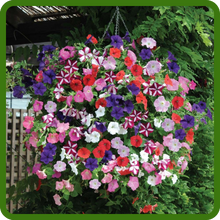
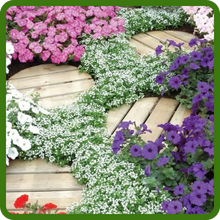
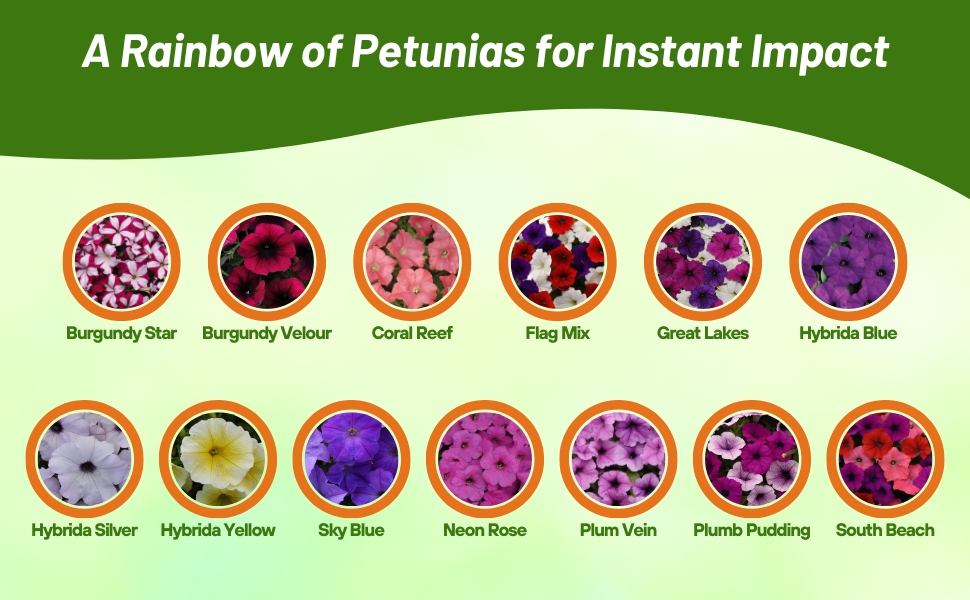
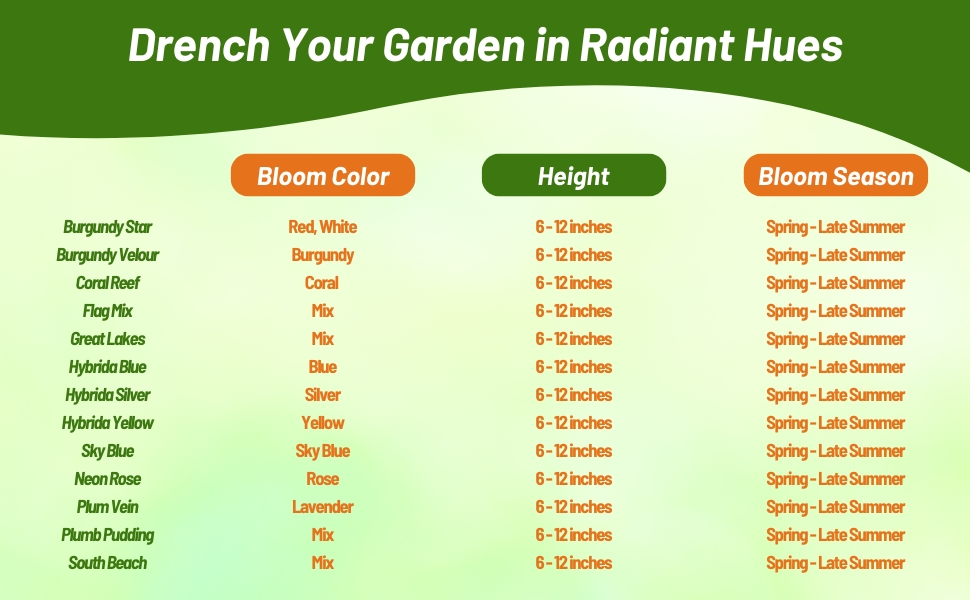
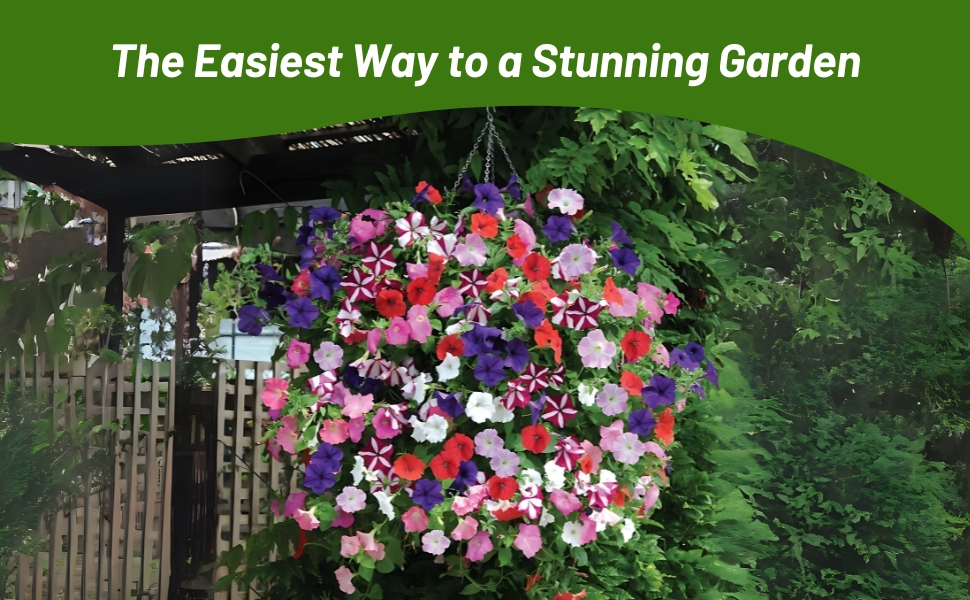
Easy Wave Spreading Petunia (Petunia x Hybrida The Flag Mix) - This low growing, spreading petunia only reaches heights of 6 - 12 inches; however, it spreads 30 - 39 inches! Its beautiful 2 inch red, white, and blue blooms will flourish from Spring to late Summer. These fast-growing plants bloom freely all season in landscapes and containers without cutting back. Wave petunia plants tolerate both heat and cooler conditions very well. Perfect for solo and mixed planters and baskets, gardens and landscapes. Easy Wave is more mounded with a more controlled spread than Wave petunias.
Easy Wave petunia's spreding habit is just amazing, covering ground at the rate of several inches every single day when the weather is warm! Easy Wave doesn't reach quite as far as the older Waves, but it stands up "taller" offering a more manageable and attractive shape for hanging baskets, windowboxes, and flowerpots of all kinds.
Common Questions
Do I need to deadhead my flowers?
Yes, you will need to deadhead your flowers to encourage more blooms.
Do petunia’s attract any pollinators?
Yes, butterflies and hummingbirds both enjoy these flowers.
What are some good ways to use in my landscape?
Beds, borders, edging, ground cover, hanging baskets or containers are all wonderful ways to use petunia’s around your garden or landscape.
My plants leaves are turning yellow, why?
Yellow leaves are a sign of low nitrogen or iron, not enough water, not enough sunlight or poor drainage. Review your growing conditions to try and determine the cause.
My flowers and leaves are looking wilted, what do I do?
Check soil moisture, it is most likely that your plant needs more water.
What are some common companion plants?
Geraniums, osteopermum, verbena and salvia all are beautiful companion plants.
Planting Directions
TEMPERATURE
72 - 76F
AVERAGE GERM TIME
7 - 14 days
LIGHT REQUIRED
Yes
DEPTH
Do not cover the seed but press into the soil
SOWING RATE
2 - 3 seeds per plant
MOISTURE
Keep soil moist for best germination
PLANT SPACING
10 - 15 inches

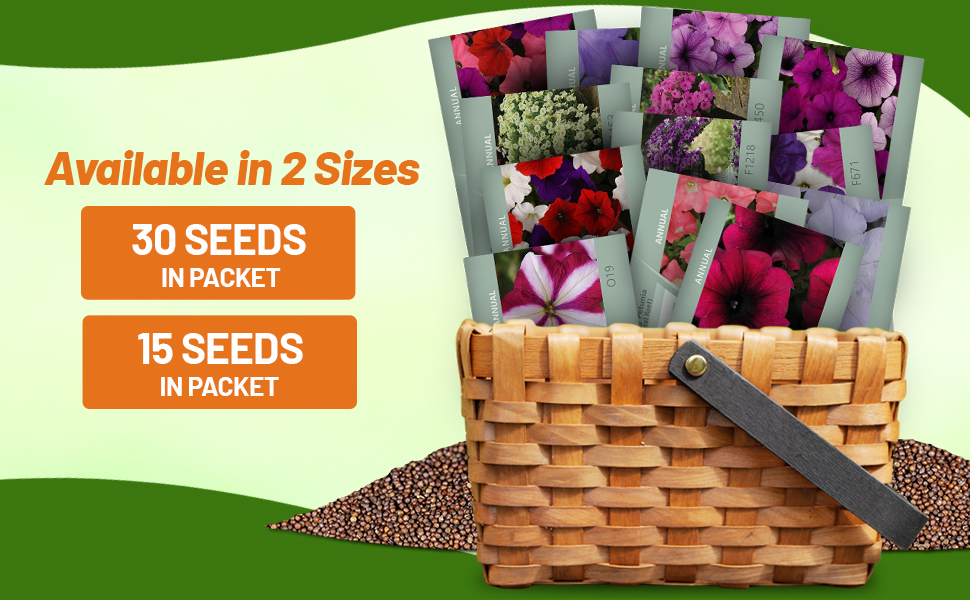
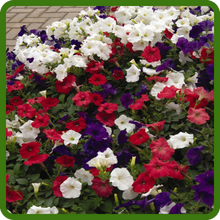
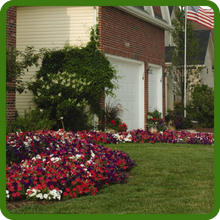
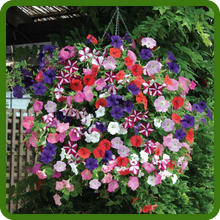
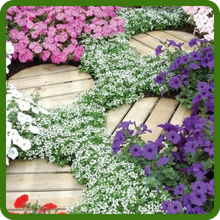
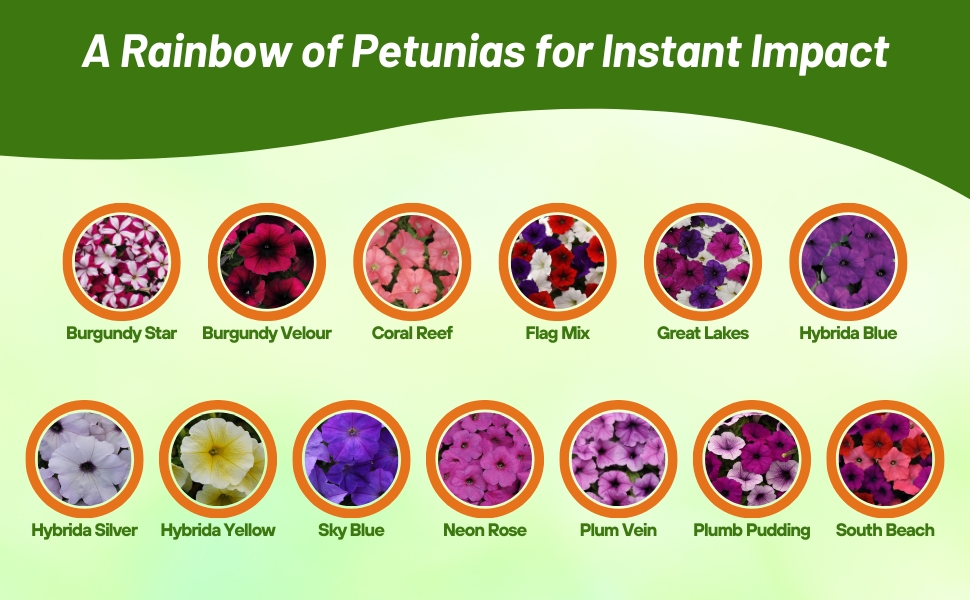
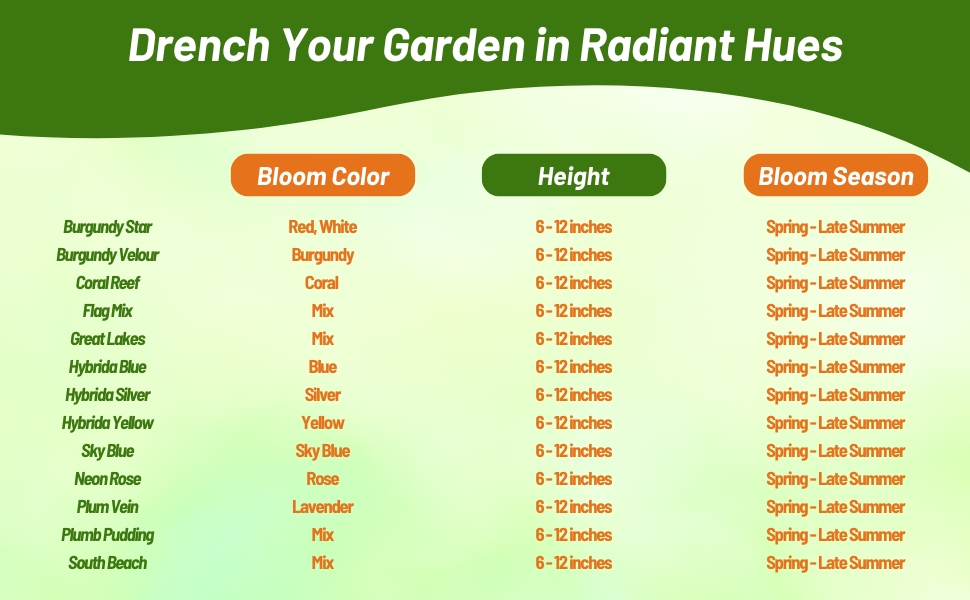
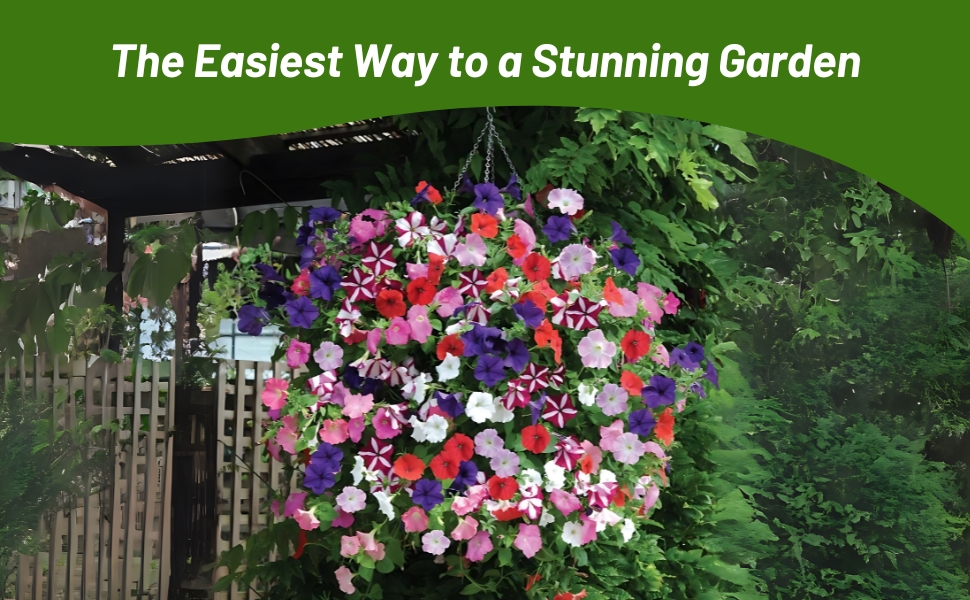
Easy Wave Spreading Petunia (Petunia x Hybrida Neon Rose) - This low growing, spreading petunia only reaches heights of 6 - 12 inches; however, it spreads 30 - 39 inches! Its beautiful 2 inch neon rose blooms will flourish from Spring to late Summer. These fast-growing plants bloom freely all season in landscapes and containers without cutting back. Wave petunia plants tolerate both heat and cooler conditions very well. Perfect for solo and mixed planters and baskets, gardens and landscapes. Easy Wave is more mounded with a more controlled spread than Wave petunias.
Easy Wave petunia's spreding habit is just amazing, covering ground at the rate of several inches every single day when the weather is warm! Easy Wave doesn't reach quite as far as the older Waves, but it stands up "taller" offering a more manageable and attractive shape for hanging baskets, windowboxes, and flowerpots of all kinds.
Common Questions
Do I need to deadhead my flowers?
Yes, you will need to deadhead your flowers to encourage more blooms.
Do petunia’s attract any pollinators?
Yes, butterflies and hummingbirds both enjoy these flowers.
What are some good ways to use in my landscape?
Beds, borders, edging, ground cover, hanging baskets or containers are all wonderful ways to use petunia’s around your garden or landscape.
My plants leaves are turning yellow, why?
Yellow leaves are a sign of low nitrogen or iron, not enough water, not enough sunlight or poor drainage. Review your growing conditions to try and determine the cause.
My flowers and leaves are looking wilted, what do I do?
Check soil moisture, it is most likely that your plant needs more water.
What are some common companion plants?
Geraniums, osteopermum, verbena and salvia all are beautiful companion plants.
Planting Directions
TEMPERATURE
72 - 76F
AVERAGE GERM TIME
7 - 14 days
LIGHT REQUIRED
Yes
DEPTH
Do not cover the seed but press into the soil
SOWING RATE
2 - 3 seeds per plant
MOISTURE
Keep soil moist for best germination
PLANT SPACING
10 - 15 inches

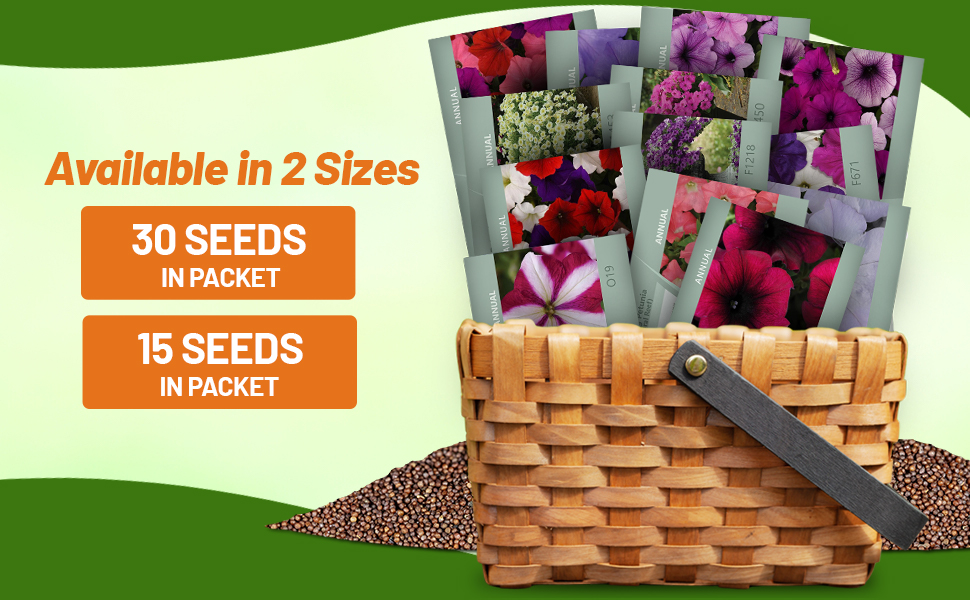
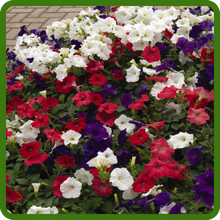
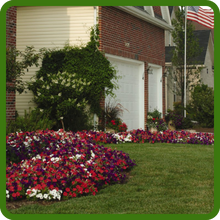
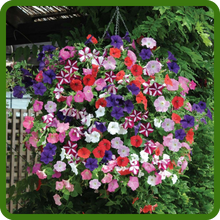
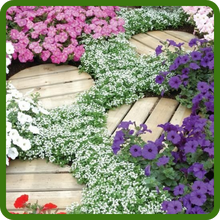
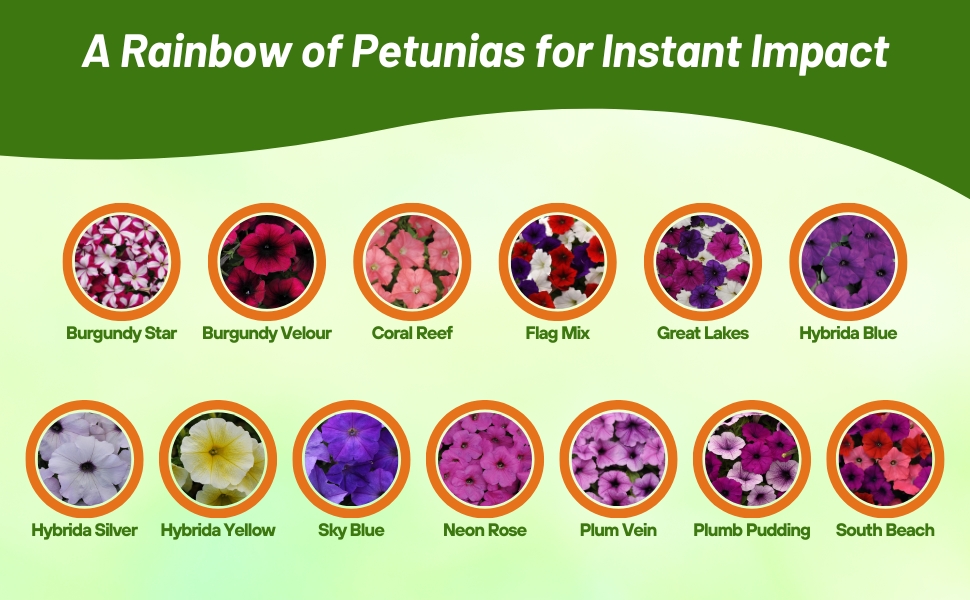
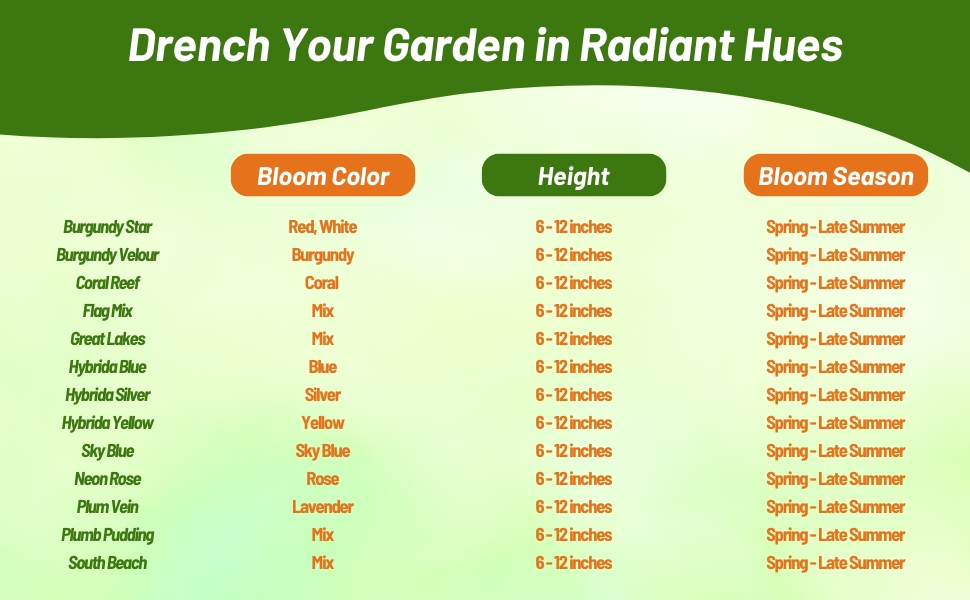
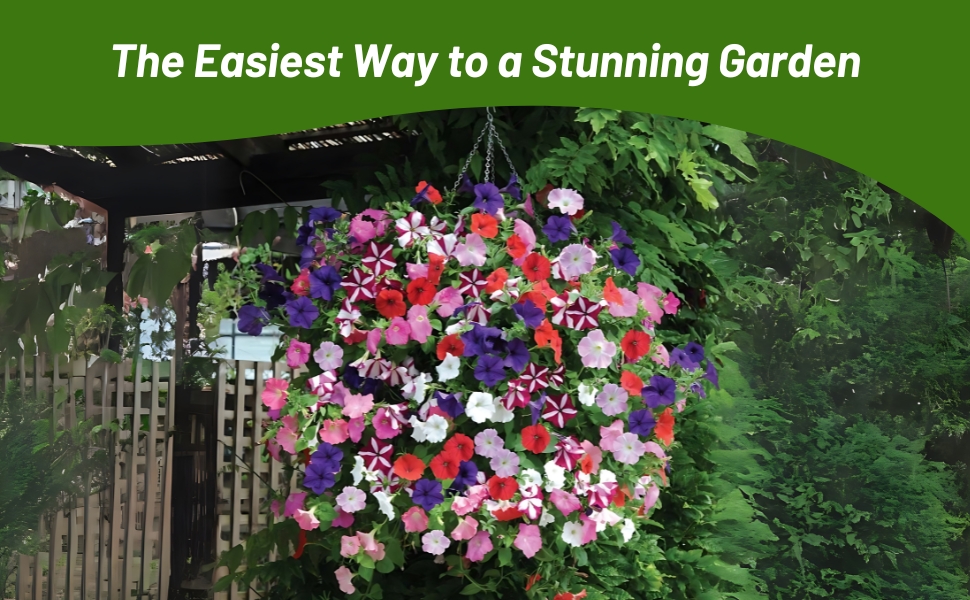
Easy Wave Spreading Petunia (Petunia x Hybrida Plum Vein) - This low growing, spreading petunia only reaches heights of 6 - 12 inches; however, it spreads 30 - 39 inches! Its beautiful 2 inch plum colored blooms will flourish from Spring to late Summer. These fast-growing plants bloom freely all season in landscapes and containers without cutting back. Wave petunia plants tolerate both heat and cooler conditions very well. Perfect for solo and mixed planters and baskets, gardens and landscapes. Easy Wave is more mounded with a more controlled spread than Wave petunias.
Easy Wave petunia's spreding habit is just amazing, covering ground at the rate of several inches every single day when the weather is warm! Easy Wave doesn't reach quite as far as the older Waves, but it stands up "taller" offering a more manageable and attractive shape for hanging baskets, windowboxes, and flowerpots of all kinds.
Common Questions
Do I need to deadhead my flowers?
Yes, you will need to deadhead your flowers to encourage more blooms.
Do petunia’s attract any pollinators?
Yes, butterflies and hummingbirds both enjoy these flowers.
What are some good ways to use in my landscape?
Beds, borders, edging, ground cover, hanging baskets or containers are all wonderful ways to use petunia’s around your garden or landscape.
My plants leaves are turning yellow, why?
Yellow leaves are a sign of low nitrogen or iron, not enough water, not enough sunlight or poor drainage. Review your growing conditions to try and determine the cause.
My flowers and leaves are looking wilted, what do I do?
Check soil moisture, it is most likely that your plant needs more water.
What are some common companion plants?
Geraniums, osteopermum, verbena and salvia all are beautiful companion plants.
































